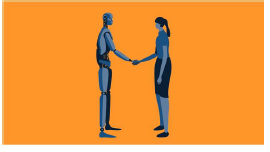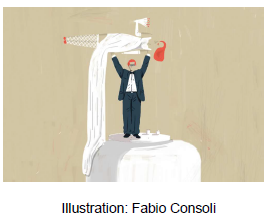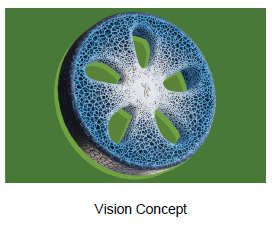Questões de Vestibular UFU-MG 2018 para Vestibular, 2º Dia
Foram encontradas 10 questões
Nuclear bombs can destroy us. Facebook undermines our privacy. Artificial intelligence (AI) and robots can enslave us (or, worse, take our jobs). Synthetic biology and geneediting have humans playing God. Social media make us depressed: we’ve never been so connected yet never so alone.
Those are just a few of the complaints leveled against technology. For most of human history, however, technology was mostly seen as a force for good. More people would live because of technical progress, from refrigeration to vaccination, than perish because of it, despite lethal inventions such as gunpowder.

Disponı́vel em: <https://www.economist.com >. Acesso em: 25 mar. 2018.
After reading this text, one could state that
“Weird.” “Curious.” “Baffling.” “Quite Stupid.” These words all once described Alexa, the voice-activated digital assistant on Amazon’s Echo device. But Amazon says the Echo Dot, a smaller, less expensive version of the Echo, was its “top-selling device” during the holiday season.
In 2014, it was odd to even consider owning an Echo — and impossible to buy without an invitation from Amazon. Today, you can pick from five Echo models. Or, you can try Google’s version: the Google Home, Google Home Mini or Google Home Max. Apple has also released a digital assistant device, the HomePod, which is fully capable with Siri. You can have your pick of digital assistants — each with varying capabilities of improving your life.
Alexa now has more than 15,000 skills, meaning any Echo device can go beyond describing the weather or playing music. The Google Assistant, first released in 2016, is catching up.
So why buy one now? First, they’re relatively inexpensive and far easier to use and understand than they were when first released. Think back to MP3 players or early smartphones: people learned a lot about using the products and became so adjusted to them that they didn’t know how to go back. Second, the future is paved with smart home devices, and voice-activated assistants to control them are becoming ubiquitous. The Echo and Google Home are no longer “test products” — the companies behind them want them to last.
Disponı́vel em: <www.nytimes.com>. Acesso em: 10 mar. 2018
Com base no texto, afirma-se que
I. existem vários modelos de assistentes digitais ativados por voz no mercado. II. Alexa ainda é bastante limitada, mas descreve o tempo e toca músicas., III. Google, Apple e Amazon desenvolveram assistentes digitais em parceria. IV. há justificativas para a compra de um Echo Dot ou de um Google Home. V. alguns dos assistentes digitais mencionados ainda se encontram em fase de testes.
Assinale a alternativa que apresenta apenas afirmativas corretas.
Novelist and travel journalist Jo Piazza on the benefits of competing in the wife-carrying race
You don’t hear that enough in life. But it was the first thing my husband and I were told after flying across the country to Sunday River, Maine, to enter the North American Wife Carrying Championship. Never heard of wife carrying? You’re forgiven. Popular in Finland as Eukonkanto and legally dubbed a “sport” there in 1991, wife carrying is a race wherein a man hurls a woman over his shoulders as if she were a sack of potatoes and stumbles through and over obstacles to cross a finish line and collect his prize— his wife’s weight in beer. Yes, that’s the prize.
We also learned that there are well-thought-out wife-carrying techniques, the most popular being the “Estonian carry,” whereby the woman hangs upside down behind her husband facing his butt, with her legs thrown over his shoulders. It’s as uncomfortable as it sounds.

Disponı́vel em: <https://americanwaymagazine.com>. Acesso em: 25 mar. 2018.
De acordo com o texto,
I. a mulher é carregada como se fosse um saco de batatas. II. EukonKanto é considerado um esporte praticado nos EUA. III. o esposo deve carregar sua esposa acima de sua cabeça. IV. cerveja equivalente ao peso da esposa é o prêmio ofertado. V. segurança e conforto da mulher são critérios fundamentais.
Assinale a alternativa que apresenta apenas afirmativas corretas.
A Shoe Engineered to Boost Performance
By Julia Zorthian
Imagine a shoe that lets you run faster, pivot better and jump higher. That’s the idea behind the Futurecraft 4D, a new sneaker whose midsole can be expertly tailored to the needs of its wearers—not only in size and shape, but also in flexibility, impact type, cushioning and more. The key is the 3-D printing process, which enables the company to “look at every single square millimeter of a midsole and tune it from a performance standpoint,” says Al VanNoy, who headed the project. It would take weeks to make those modifications using traditional shoemaking methods. But the Futurecraft 4D midsoles can be printed in as little as two hours, meaning they could even be produced in stores. At least that’s a possibility for the future.

Disponı́vel em: <http://time.com>. Acesso em: 25 mar. 2018.
Based on the text, Futurecraft 4D
Über-Adaptable Airless Tires
By Lisa Eadicicco
In the future, our cars will be smart, and our tires will be smarter. For starters, it’s airless, eliminating the need to worry about pounds per square inch. It’s also made from recycled materials in an effort to reduce waste. But the most impressive feature may be its 3-D--printed treads, which can be swapped in and out to accommodate various road conditions—without changing the tire itself. The challenge will be figuring out a way to do it quickly, says Terry Gettys, who helped lead the project, “because consumers are going to want their tires [ready to go] in just a few minutes.”

One of the most innovative features of this new concept tire is that it